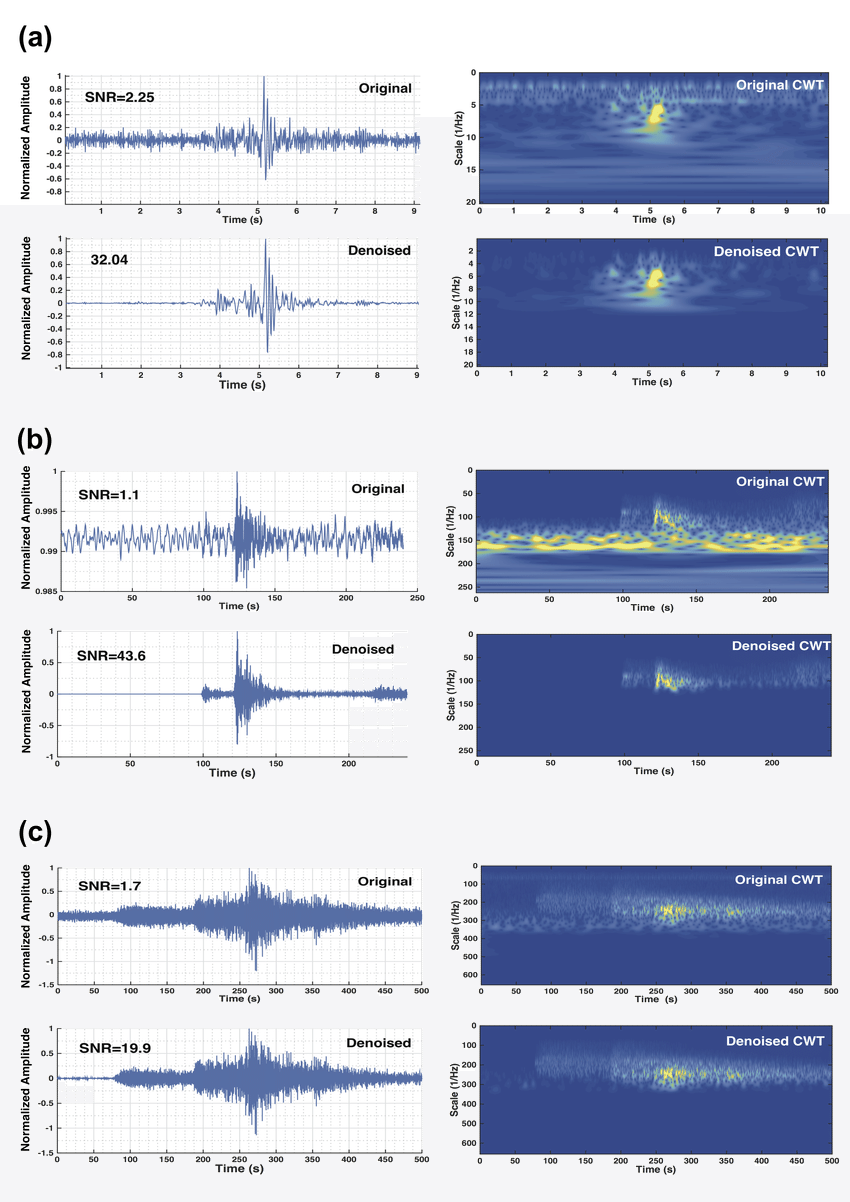This repository contains MATLAB scripts and sample seismic data for appying the denoising algorithm proposed in:
Mousavi S. M., and C. A. Langston (2016). Hybrid Seismic denoising Using Higher Order Statistics and Improved Wavelet Block Thresholding, Bulletin of the Seismological Society of America,106 (4), 1380-1393,doi:10.1785/0120150345
BibTeX:
@article{mousavi2016hybrid,
title={Hybrid seismic denoising using higher-order statistics and improved wavelet block thresholding},
author={Mousavi, S Mostafa and Langston, Charles A},
journal={Bulletin of the Seismological Society of America},
volume={106},
number={4},
pages={1380--1393},
year={2016},
publisher={Seismological Society of America}
}
demo.m includes all info you need to know for running the code.
you need MATLAB statistics and signal processing toolboxes to run this code.
(https://earthquake.usgs.gov/contactus/menlo/seminars/1093)
Seismic data recorded by surface arrays are often contaminated by unwanted noise. In many conventional seismic methods, the reliability of the seismic data and accuracy of parameter extraction, such as onset time, polarity, and amplitude, are directly affected by the background noise level. As a result, the accuracy of event location and other attributes derived from seismic traces are also influenced by the noise content. Therefore, there is a great need for developing suitable procedures that improve signal-to-noise ratios allowing for robust seismic processing. In this presentation, I introduce four different methods for automatic denoising of seismic data. These methods are based on the time-frequency thresholding approach. The efficiency and performance of the thresholding-based method for seismic data have been improved significantly. Proposed methods are automatic and data driven in the sense that all the filter parameters for denoising are dynamically adjusted to the characteristics of the signal and noise. These algorithms are applied to single channel data analysis and do not require large arrays of seismometers or coherency of arrivals across an array. Hence, they can be applied to every type of seismic data and can be combined with other array based methods. Results show these methods can improve detection of small magnitude events and accuracy of arrival time picking.
In this work, we introduce a nondiagonal seismic denoising method based on the continuous wavelet transform with hybrid block thresholding (BT). Parameters for the BT step are adaptively adjusted to the inferred signal property by minimizing the unbiased risk estimate of Stein (1980). The efficiency of the denoising for seismic data has been improved by adapting the wavelet thresholding and adding a preprocessing step based on a higher-order statistical analysis and a postprocessing step based on Wiener filtering. Application of the proposed method on synthetic and real seismic data shows the effectiveness of the method for denoising and improving the signal-to-noise ratio of local microseismic, regional, and ocean bottom seismic data.
a)Induced microearthquake, b)local earthquake recorded by oceanic bottom seismometer, c)regional earthquake.
